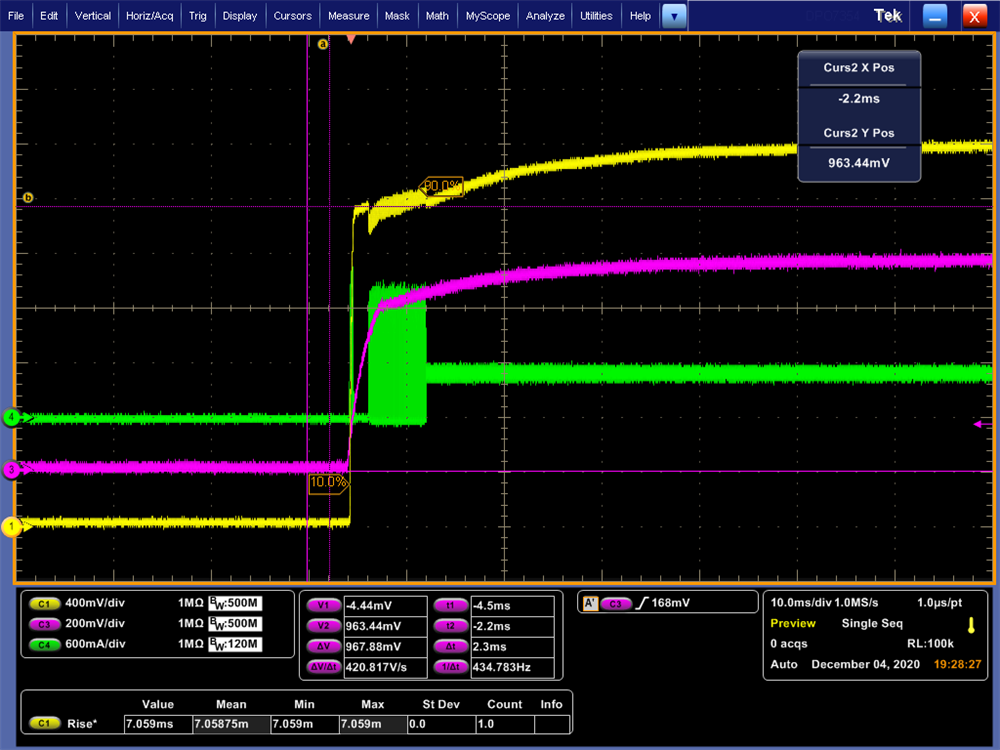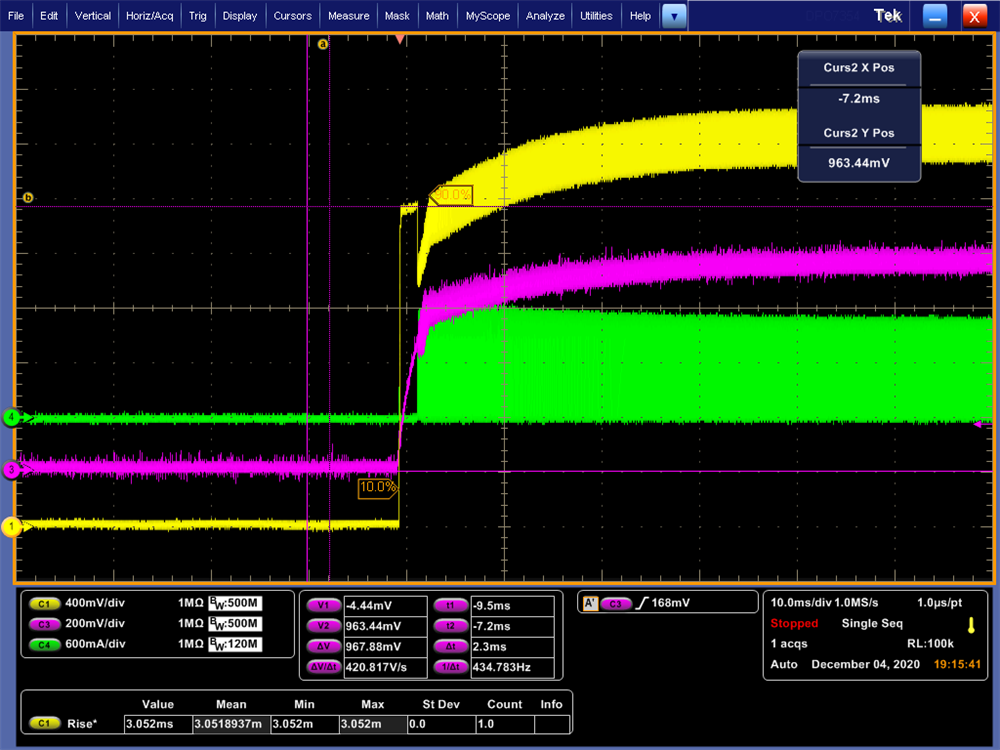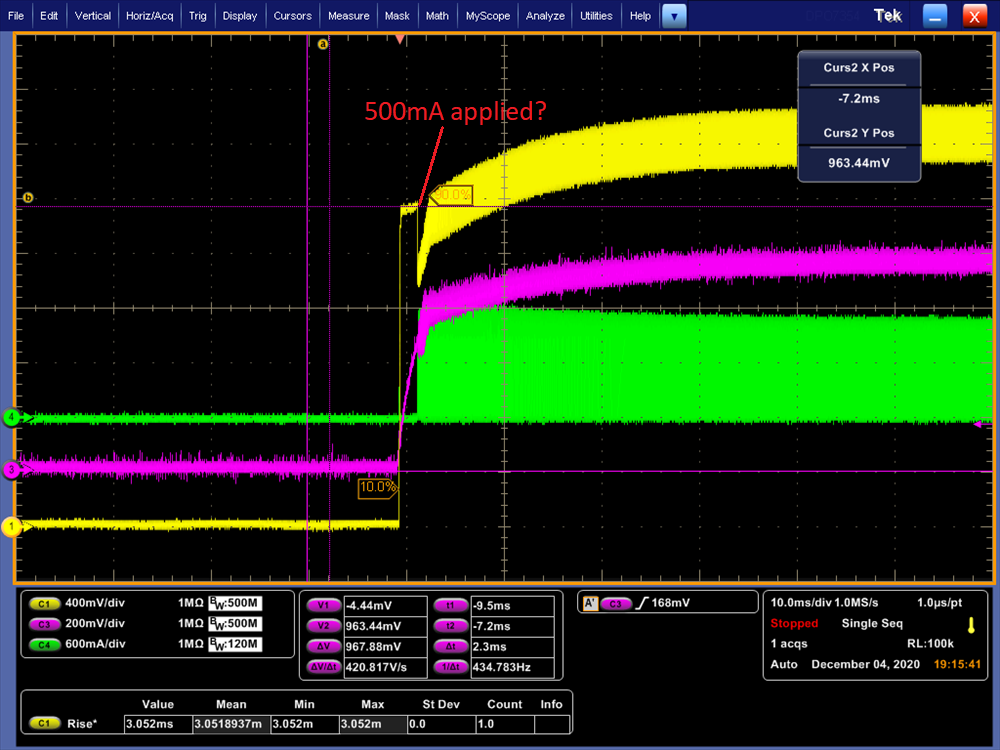Hi,
Please see the oscilloscope shot. Can I ask you why the two scope shots are showing such a big different operation? The input current in second shot with the lower Cout keeps touching zero and increasing periodically in a closer look, which has an influence in output voltage waveform as well. What's the reason of this operating? May I get a wrong test setup?
CH1 : VOUT, CH4 : IIN
1) Cout 100uF, Load 500mA
2) Cout 4.7uF / Load 500mA
Thanks,




